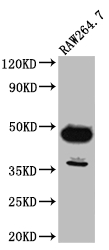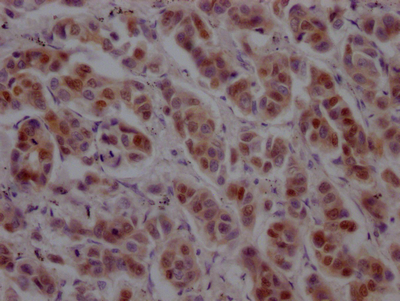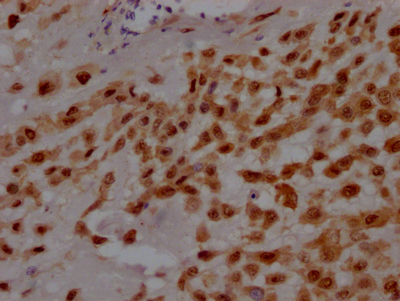The generation of the GATA3 recombinant monoclonal antibody involves a well-structured process to ensure its superior quality and specificity. It begins by isolating B cells from the spleen of an immunized animal, where the synthesized peptide derived from human GATA3 is used as the immunogen. RNA is extracted from these B cells and converted into complementary DNA (cDNA) through reverse transcription. The GATA3 antibody genes are then amplified using specific primers targeting the antibody constant regions and inserted into an expression vector. The vector is subsequently introduced into host cells through transfection, facilitating the production of the GATA3 recombinant monoclonal antibody. Following a suitable incubation period, the antibody is harvested from the cell culture supernatant and meticulously purified using affinity chromatography to obtain a highly purified form of the GATA3 recombinant monoclonal antibody suitable for various applications. Rigorous characterization assays, including ELISA, WB, and IHC analysis, are performed to confirm the antibody's specificity and functionality in detecting human GATA3 protein. Through this rigorous production process, a dependable and effective GATA3 recombinant monoclonal antibody is developed, serving as a valuable tool in diverse research pertaining to GATA3.






